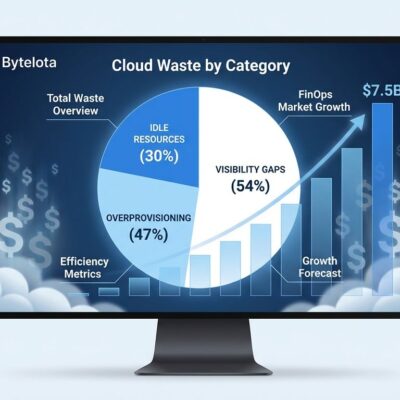
In August 2025, TypeScript overtook both Python and JavaScript to become the most-used programming language on GitHub—the first major language leadership change in over a decade. The language gained 1.054 million contributors in 2025 alone, achieving 66% year-over-year growth to reach 2.6+ million monthly contributors. This isn’t a marginal shift. When the #1 language changes for the first time since the early 2010s, it signals a fundamental reconfiguration of the development ecosystem.
The timing matters. This happened because two forces converged: major frameworks like Next.js, Astro, and SvelteKit now default to TypeScript, and AI-assisted development tools like GitHub Copilot work significantly better with typed languages. For developers making career decisions in 2025, understanding this shift isn’t optional—TypeScript is moving from “nice to have” to “baseline expectation” for professional roles.
The Numbers Behind TypeScript’s GitHub Dominance
TypeScript added 1.054 million contributors in 2025, achieving 66% year-over-year growth and surpassing Python’s 2.594 million contributors to reach 2.6+ million. According to GitHub’s Octoverse 2025 report, this represents the most significant language shift in more than a decade.
The comparative growth rates tell the story. TypeScript grew 66% year-over-year, adding over a million new developers. Python, dominant in AI and data science, still grew an impressive 48% and added 850,579 contributors. JavaScript, the mature incumbent, grew 25% with 427,148 new contributors. However, TypeScript’s growth eclipsed them both, driven by forces that go beyond language design.
Moreover, TypeScript downloads on npm surged to 60+ million per week—triple the 20 million weekly downloads from 2021. This isn’t speculative hype. Millions of developers are choosing TypeScript for real-world projects, and the data shows no signs of slowing.
Why AI Tools and Framework Defaults Drove This Shift
TypeScript didn’t win on language features alone. Instead, two ecosystem forces created a perfect storm: framework defaults and AI coding assistants.
Every major frontend framework now scaffolds projects in TypeScript by default. Next.js 15, Astro 3, SvelteKit 2, Angular 18, and Remix all generate TypeScript codebases when developers run create-next-app or equivalent commands. Consequently, this means new projects start with TypeScript automatically, driving organic adoption without conscious decision-making. Framework maintainers made the choice for millions of developers.
AI coding tools accelerated this trend. With 80% of new GitHub developers using Copilot in their first week, and 94% of LLM-generated compilation errors being type-check failures, TypeScript’s static type system provides crucial guardrails for AI-generated code. Anders Hejlsberg, TypeScript’s lead architect, explained it clearly: “AI has seen tons of JavaScript, Python, and TypeScript so it’s great at writing them. Static types act as guardrails, preventing hallucinations in machine-generated code.”
Furthermore, the combination is powerful. Frameworks default to TypeScript, so developers create TypeScript projects. AI tools work better with TypeScript, so developers get better results from Copilot. The feedback loop reinforces itself, creating structural momentum that transcends individual language preferences.
The Hybrid Stack: Python Plus TypeScript
TypeScript didn’t replace Python. Instead, developers are adopting a “hybrid stack” approach: Python for data pipelines and machine learning, TypeScript for apps and APIs. This specialization pattern reflects a broader industry shift away from “full-stack generalists” toward “strategic specialists” who choose languages for specific purposes.
The data backs this up. Python and TypeScript combined account for 5.2 million contributors on GitHub. Python remains dominant for AI and ML workloads—unchanged from previous years—while TypeScript dominates frontend and API development. Industry analysis shows developers increasingly combining TypeScript + React + Next.js for frontend with Python + FastAPI for backend data processing. Additionally, FastAPI saw a 5-point increase in the Stack Overflow survey, signaling strong Python backend trends, while TypeScript handles the application layer.
For developers, this means you don’t choose TypeScript OR Python—you need both. Backend engineers and data scientists should learn TypeScript for API development and frontend integration. Meanwhile, frontend developers should understand Python if they work with AI or ML features. The “T-shaped” developer—deep in one, competent in the other—is the new baseline.
Career Implications for Developers
TypeScript is shifting from “nice to have” to “baseline expectation” for enterprise applications. Developers entering the job market in 2025 face different expectations than even two years ago. Therefore, TypeScript literacy is increasingly assumed for professional frontend and full-stack roles, not optional.
The productivity data supports this shift. A fintech startup using TypeScript from day one reported a 30% reduction in post-release bugs and 40% faster developer ramp-up time compared to JavaScript projects. Studies show teams using TypeScript report up to 15% fewer runtime errors in production environments. In fact, type safety isn’t theoretical—it translates to measurable quality improvements and faster onboarding.
However, context matters. Critics warn against over-engineering: developers report “wasting weeks setting up perfect TypeScript configs for landing pages,” and for solo projects with around 200 lines of code, TypeScript can feel like overkill. The key is matching tool to task. Large codebases with 1000+ lines and multiple developers benefit enormously from type safety. Conversely, rapid prototypes and weekend projects often don’t. Treating TypeScript as a religion instead of a pragmatic choice leads to wasted time.
For junior developers deciding what to learn: start with JavaScript fundamentals, then adopt TypeScript for real-world team projects. For senior developers evaluating tools: TypeScript for team codebases and long-term maintenance, JavaScript for prototypes and quick experiments. For hiring managers: TypeScript literacy is becoming table stakes for frontend positions, but don’t penalize JavaScript expertise—both matter.
The Criticisms: TypeScript Trade-Offs
Despite explosive growth, TypeScript faces legitimate criticisms. It requires a build step, adding complexity compared to plain JavaScript. Browsers don’t run TypeScript natively—it’s not an ECMA standard—so transpilation is mandatory. This overhead slows rapid prototyping. Developers report building “a Chrome extension in 3 hours using JavaScript with zero TypeScript config, zero type definitions, just raw speed.” For experimentation and small scripts, TypeScript’s setup costs can outweigh type safety benefits.
Migration costs are real for large JavaScript codebases. Teams with hundreds of thousands of lines of JavaScript face months of gradual migration work. TypeScript adoption requires learning static typing, which adds onboarding time for developers transitioning from dynamic languages. Moreover, the community debates can be exhausting—teams treating TypeScript versus JavaScript “like a religion” instead of a tool choice waste energy on ideology instead of shipping features.
A balanced perspective prevents cargo-culting. TypeScript is a tool, not dogma. The decision depends on team size (2+ developers favors TypeScript), project lifespan (6+ months favors TypeScript), and codebase size (1000+ lines favors type safety). Solo hackers building weekend projects? JavaScript is often the right choice. Understanding trade-offs enables better decisions than following trends blindly.
What Happens Next
TypeScript’s momentum shows no signs of slowing. As AI coding tools mature and become standard development practice, typed languages will continue gaining ground. The combination of framework defaults and AI tool integration creates structural advantages that compound over time. Python will remain dominant for AI and data science, but TypeScript is solidifying its position as the default for application development.
For developers, the takeaway is clear: learn both languages strategically. TypeScript for frontend, APIs, and team projects. Python for data processing, ML pipelines, and backend services. The hybrid stack isn’t a trend—it’s the new normal. Furthermore, AI tools will keep favoring languages with strong type systems, making TypeScript literacy increasingly valuable as Copilot and similar tools become ubiquitous.
The first major language shift in over a decade isn’t just about TypeScript winning. It’s about the ecosystem evolving—frameworks, tools, and AI assistants creating new selection pressures that favor type safety and structured code. Adapt accordingly.











